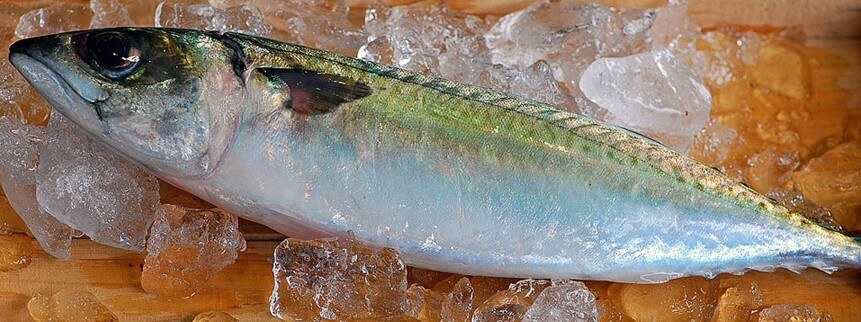
Sekisaba (関サバ) and Sekiaji (関アジ) are ‘designer’ fish known for their high prices.
Of them, Sekisaba is a premium fish that can go for as high as US $50 per fish. So, what kind of fish is Sekisaba and what’s the difference between it and normal Saba (Mackerel)?
Sekisaba is a Saba caught in the Hoyo Strait with a fishing pole by a union member of the Saganoseki branch of the Oita National Federation of Fisheries Cooperative (JF Oita). In other words, Sekisaba is not a type of Saba, but a premium fish created by differentiating the fishing method.
Sekisaba started to become known all over Japan between the late 1980s and early 1990s. Until then, Sekisaba was only known as a commonplace fish that was caught incidentally with Aji and went for US $2 per fish.
However, the Saganoseki branch of JF Oita applied for the first trademark ever in the industry and then grew the brand through methods such as tagging each individual fish by hand. This resulted in recognition of its taste as “Saba that can be enjoyed even as sashimi” (while Saba is generally a fish that loses its freshness easily and not eaten raw), catapulting it to a national constituency After that, the thorough quality management and branding paid off and the price jumped to 10 times that of normal Saba.
The first difference between Sekisaba and normal Saba is that Sekisaba is caught carefully, one at a time. The use of ground bait is also banned so that the Sekisaba won’t eat anything but the natural diet (avoiding odor). Each fisher is only allowed to use fishing lures they make from fish skin or ragworms. Fish caught in this way are let out into a live holding tank on the ship and brought to the fishing port alive. After arriving at the port, the tank on the ship is checked, the fish size is looked at from the water surface and the approximate weight is measured. This method is called “Tsurugai”. This is because when the fish is placed on a scale, it struggles violently and can injure itself. The fish are allowed to calm down in the tank (called Ikekoshi) for a day at the fishing port. At the time of shipping, Ikejime is performed, in which a knife is put into gill parts, the spinal cord is cut, and then it is submerged into saltwater and the blood is let out. After that a processing method called Shinkeijime is performed in which a wire is inserted into the spinal cord to put the fish in a state of asphyxiation. Therefore, there is little damage to the fish, maintaining the freshness. When it is transported to the place of consumption, the temperature is kept at 5°C (41°F). This is because the fish does not lose its crunchiness compared to when it is cooled to 0°C. Even this is not easy to imitate.
The Hoyo Strait where Sekisaba is caught is rich in plankton, which the Sekisaba feeds on, and the flow of the tide is fast. The reason Sekisaba meat firms well and is fatty year-round is thanks to the good environment of the sea it is raised in.
If you come across a Sekisaba that so much work has been put into, try it as sashimi, not Nigiri sushi. This is because Saba, which has a peculiarity to it, is unpopular among some people. However, Sekisaba doesn’t have this off-taste and doesn’t taste like Mackerel, so even people who don’t care for fish should be able to find it tasty.
[sc_apply url=”https://sushiuniversity.jp/apply/”]
We hope this information will be helpful.

Revision date: August 21, 2023
Share this article
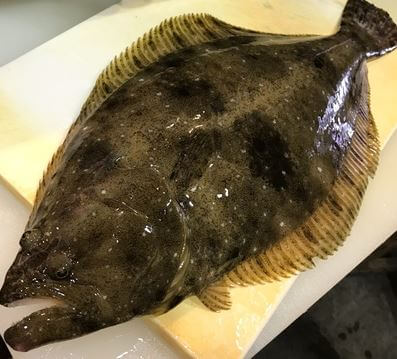 Hirame is a high-quality fish that goes for at least US $50 per kilogram. It can even exceed US $80 per kilogram, depending on the timing and the fish’s body.
Hirame is a high-quality fish that goes for at least US $50 per kilogram. It can even exceed US $80 per kilogram, depending on the timing and the fish’s body.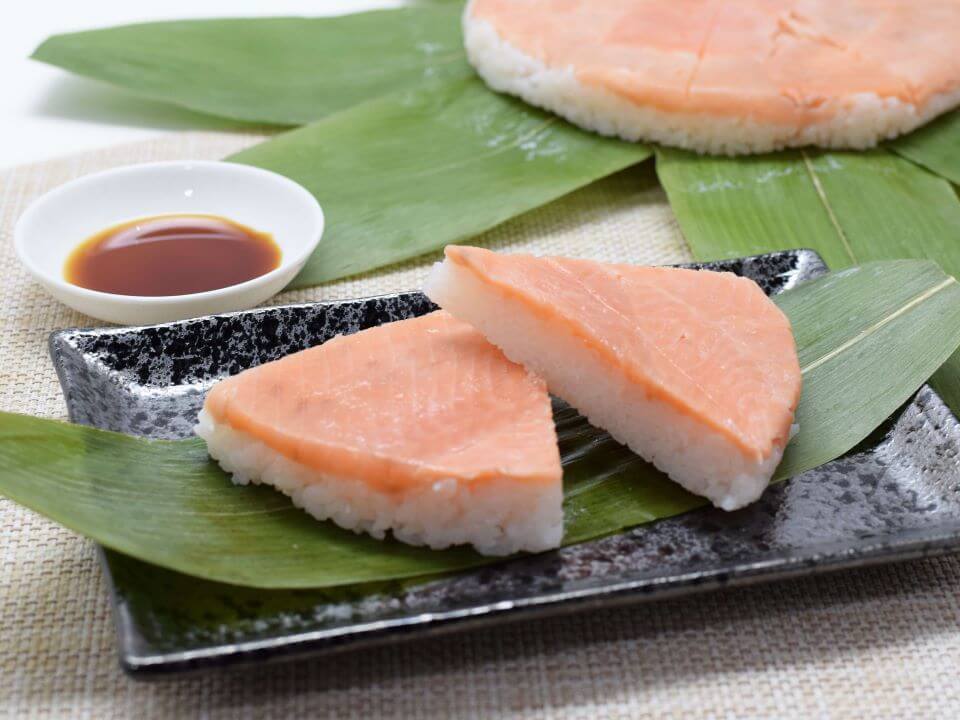 The origin of Masuzushi dates back about 300 years. Apparently, in 1717 it was first presented as Ayu narezushi (narezushi is a traditional food, said to be the original form of sushi and made from lactic fermentation of fish) to the third-generation feudal lord, Toshioki Maeda, by Shinpachi Yoshimura, a feudal retainer of Toyama who excelled in cooking skills. Toshioki liked the dish very much and assigned the role of vinegaring Ayu to Shinpachi. After that, it is said that the same narezushi was presented to the eighth shogun of the Tokugawa shogunate, Yoshimune Tokugawa, and that Yoshimune was extremely pleased with it.
The origin of Masuzushi dates back about 300 years. Apparently, in 1717 it was first presented as Ayu narezushi (narezushi is a traditional food, said to be the original form of sushi and made from lactic fermentation of fish) to the third-generation feudal lord, Toshioki Maeda, by Shinpachi Yoshimura, a feudal retainer of Toyama who excelled in cooking skills. Toshioki liked the dish very much and assigned the role of vinegaring Ayu to Shinpachi. After that, it is said that the same narezushi was presented to the eighth shogun of the Tokugawa shogunate, Yoshimune Tokugawa, and that Yoshimune was extremely pleased with it.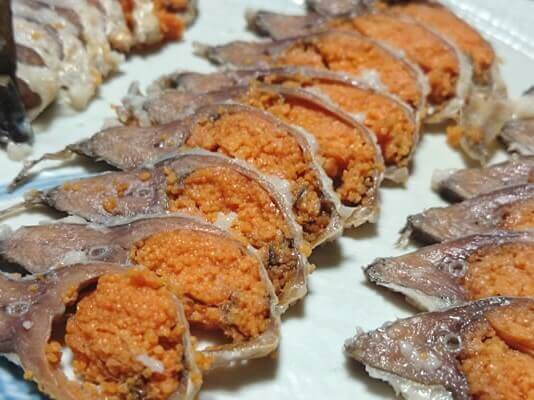 Narezushi (mainly a preserved food in which fish undergoes lactic fermentation with salt and rice), in which Sushi finds its roots, can still be found even today throughout Japan. The most famous is Funazushi (鮒寿司, 鮒鮓, 鮒寿し) in Shiga prefecture.
Narezushi (mainly a preserved food in which fish undergoes lactic fermentation with salt and rice), in which Sushi finds its roots, can still be found even today throughout Japan. The most famous is Funazushi (鮒寿司, 鮒鮓, 鮒寿し) in Shiga prefecture.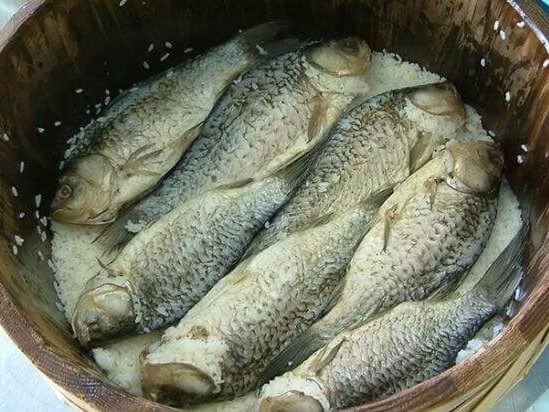 Making Funazushi sushi is surprisingly simple. The only ingredients are crucian carp caught in
Making Funazushi sushi is surprisingly simple. The only ingredients are crucian carp caught in 
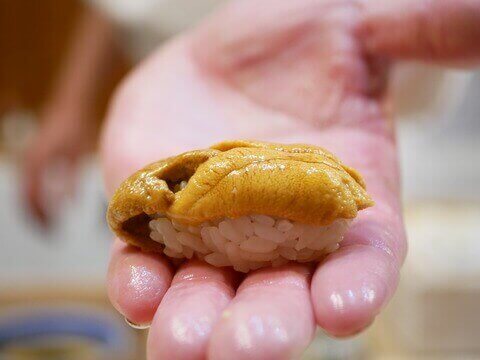 In Japanese, when a compound word is made out of two individual words, and the first consonant of the second word changes from a “clear sound” to a “fuzzy sound”, it is called “Rendaku”. For example, Edomae (江戸前) + sushi (寿司) changes to Edomaezushi (江戸前寿司). However, the correct pronunciation is only generalized among Japanese people, so in this book we chose the most commonly searched version of each compound word.
In Japanese, when a compound word is made out of two individual words, and the first consonant of the second word changes from a “clear sound” to a “fuzzy sound”, it is called “Rendaku”. For example, Edomae (江戸前) + sushi (寿司) changes to Edomaezushi (江戸前寿司). However, the correct pronunciation is only generalized among Japanese people, so in this book we chose the most commonly searched version of each compound word.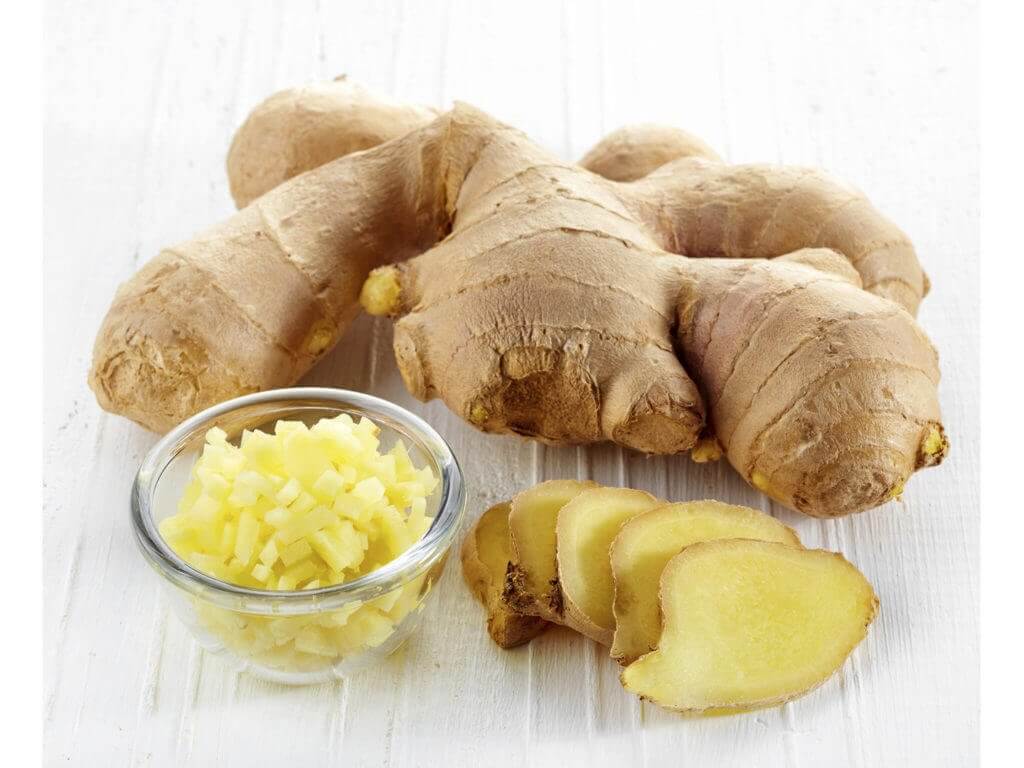
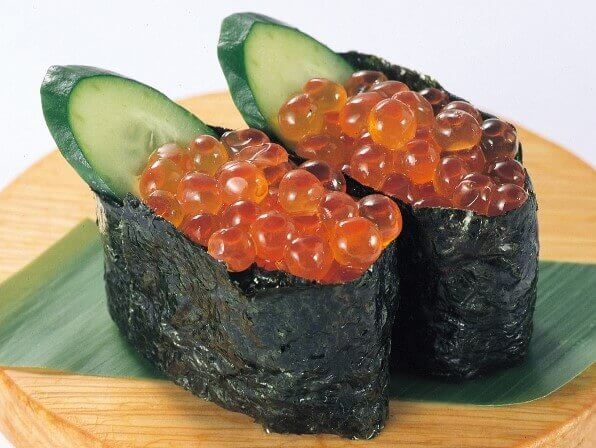 Immature salmon eggs still wrapped in ovarian membrane and salted are called sujiko. Ikura is salmon roe in which each mature egg is separated from the ovarian membrane before laying the eggs and then salted or marinated in soy sauce. The ikura of Chum salmon going upstream in the Kushiro River and Tokachi River in Hokkaido From October to December are considered to be premium ikura.
Immature salmon eggs still wrapped in ovarian membrane and salted are called sujiko. Ikura is salmon roe in which each mature egg is separated from the ovarian membrane before laying the eggs and then salted or marinated in soy sauce. The ikura of Chum salmon going upstream in the Kushiro River and Tokachi River in Hokkaido From October to December are considered to be premium ikura.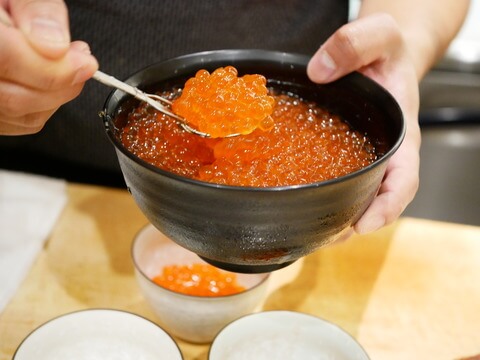 In Japan, salmon roe that has been separated from the ovarian membrane and then salted is called ikura. At sushi restaurants, this is also marinated in broth that includes soy sauce, mirin and sake. This is called ikura marinated in soy sauce, or simply ikura. Worldwide, caviar is considered to be of more value than ikura. Therefore, in an attempt to improve the impression of soy sauce-marinated ikura, it is sometimes called ‘salmon caviar’. This is behavior especially seen among manufacturers selling soy sauce-marinated ikura.
In Japan, salmon roe that has been separated from the ovarian membrane and then salted is called ikura. At sushi restaurants, this is also marinated in broth that includes soy sauce, mirin and sake. This is called ikura marinated in soy sauce, or simply ikura. Worldwide, caviar is considered to be of more value than ikura. Therefore, in an attempt to improve the impression of soy sauce-marinated ikura, it is sometimes called ‘salmon caviar’. This is behavior especially seen among manufacturers selling soy sauce-marinated ikura.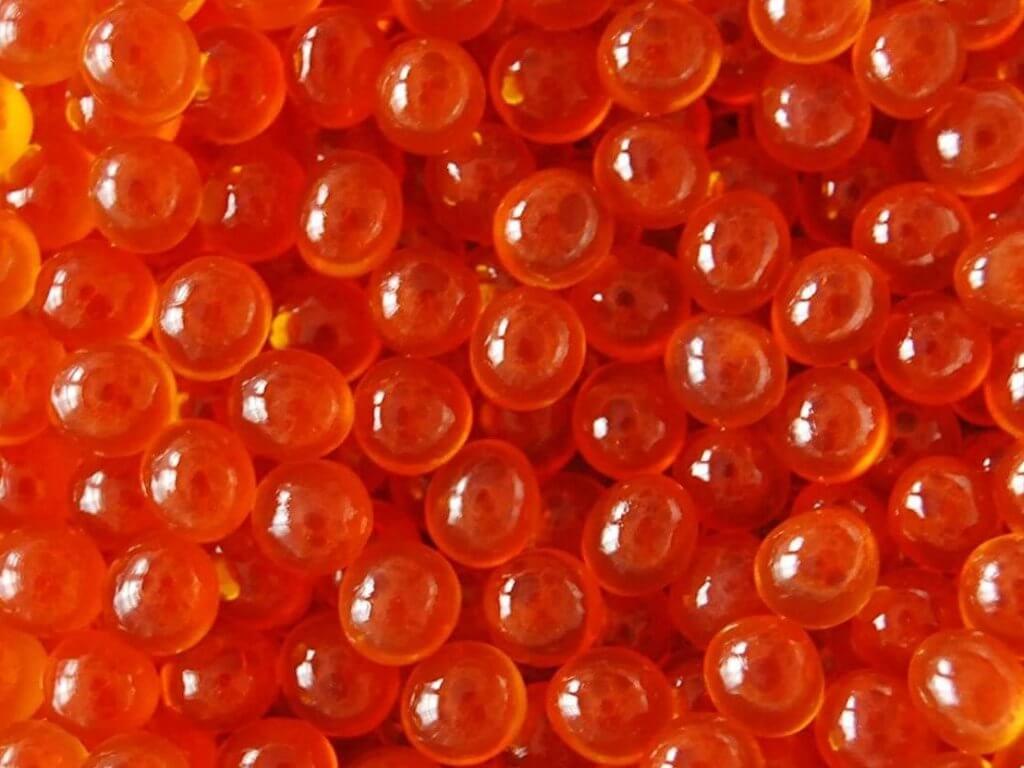 Not to belabor the point, but the following is dependent on the following. In Japanese salmon is referred to as “鮭” (sake/salmon) or “鱒” (masu/trout). The characters look different, but they are part of the same family and there aren’t clear biological categories to separate them into. Incidentally, in English the type that makes their way into the sea are called “salmon,” and those that remain in freshwater their entire lives are known as, “trout.” They are all considered to be part of the salmon family. Now, foreigners who know about Japan may imagine Japanese sake (the alcoholic beverage) when they hear the word “sake” so we spell sake/salmon as “shake”, which is close to the sound pronounced by Japanese people.
Not to belabor the point, but the following is dependent on the following. In Japanese salmon is referred to as “鮭” (sake/salmon) or “鱒” (masu/trout). The characters look different, but they are part of the same family and there aren’t clear biological categories to separate them into. Incidentally, in English the type that makes their way into the sea are called “salmon,” and those that remain in freshwater their entire lives are known as, “trout.” They are all considered to be part of the salmon family. Now, foreigners who know about Japan may imagine Japanese sake (the alcoholic beverage) when they hear the word “sake” so we spell sake/salmon as “shake”, which is close to the sound pronounced by Japanese people. Ken (
Ken (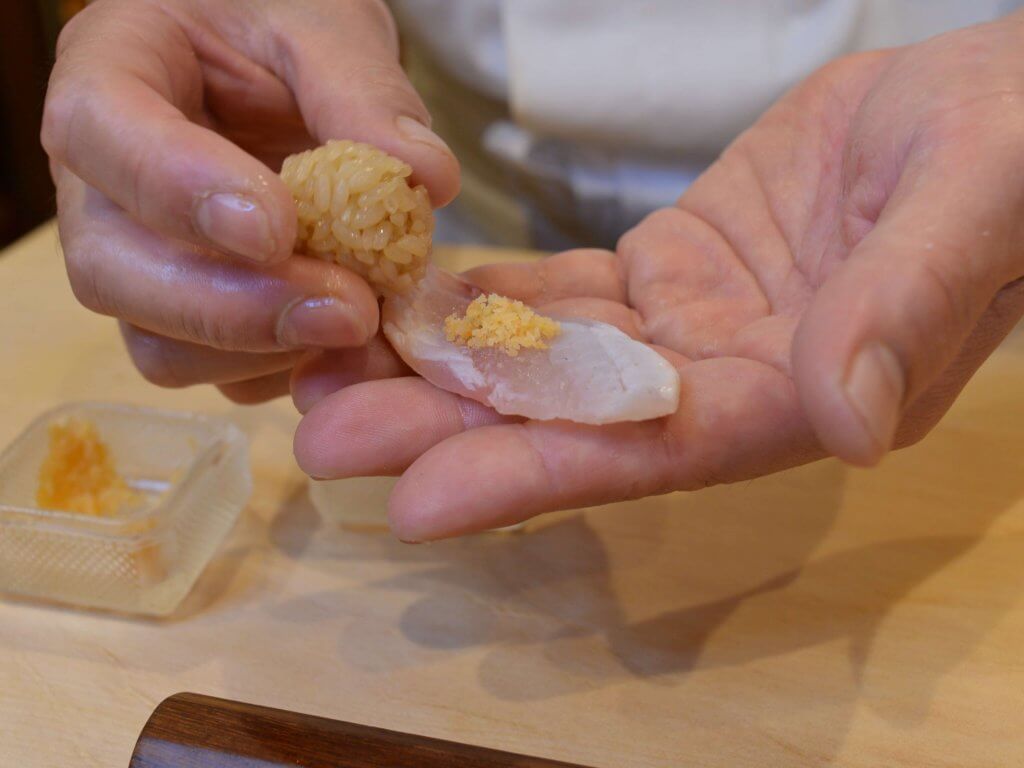
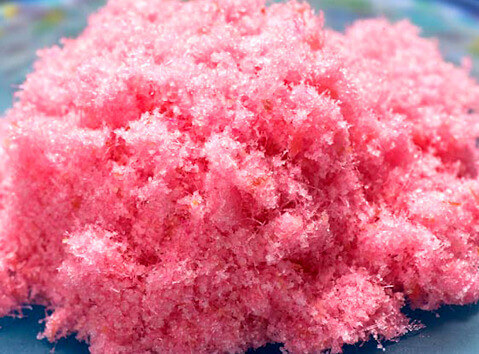 Denbu (田麩) is mainly boiled white fish that is then loosened and made into fibers, then seasoned with sugar, mirin, salt, etc., then roasted until the moisture is gone. The most commonly used fish for denbu are
Denbu (田麩) is mainly boiled white fish that is then loosened and made into fibers, then seasoned with sugar, mirin, salt, etc., then roasted until the moisture is gone. The most commonly used fish for denbu are 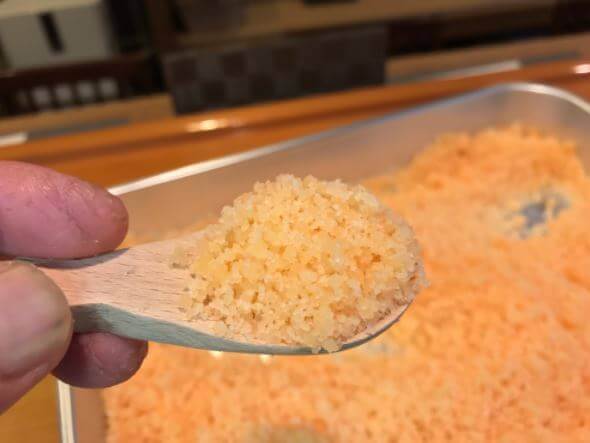 On the other hand, Oboro (朧) is made by using a grinding bowl to break down the meat of shiba shrimp or white fish, then seasoning with sugar, mirin and salt before removing the moisture over low heat. Oboro is used for bara-chirashi, futomaki (large sushi rolls), etc., and is also sometimes used between the topping and shari (vinegared rice) in nigiri sushi. This practice enhances the subtle flavor of the fish, serving as a base layer of umami, while helping the sushi topping blend more harmoniously with the vinegared rice. Oboro acts as a kind of “
On the other hand, Oboro (朧) is made by using a grinding bowl to break down the meat of shiba shrimp or white fish, then seasoning with sugar, mirin and salt before removing the moisture over low heat. Oboro is used for bara-chirashi, futomaki (large sushi rolls), etc., and is also sometimes used between the topping and shari (vinegared rice) in nigiri sushi. This practice enhances the subtle flavor of the fish, serving as a base layer of umami, while helping the sushi topping blend more harmoniously with the vinegared rice. Oboro acts as a kind of “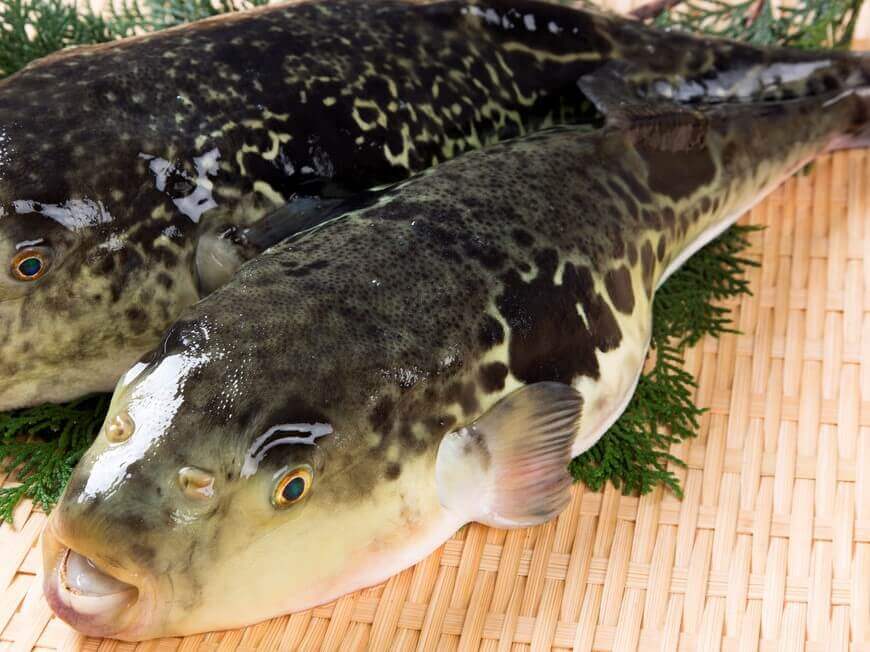
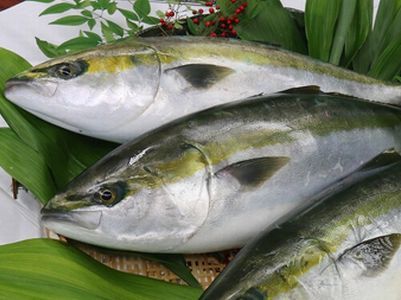 A good representative fish of shusseuo is the
A good representative fish of shusseuo is the 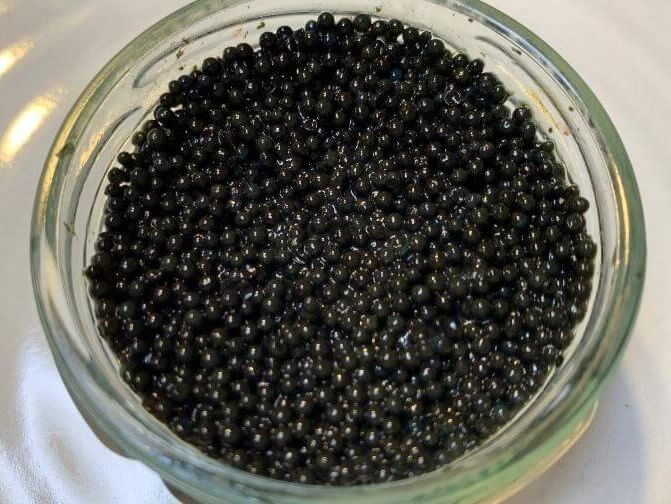 Lumpfish roe is sold as a substitute for caviar. The size of each egg is about 2 mm in diameter and it is colored with squid ink. This gives it a taste and appearance similar to caviar. The market price is an astonishing USD $5 per 50 g.
Lumpfish roe is sold as a substitute for caviar. The size of each egg is about 2 mm in diameter and it is colored with squid ink. This gives it a taste and appearance similar to caviar. The market price is an astonishing USD $5 per 50 g.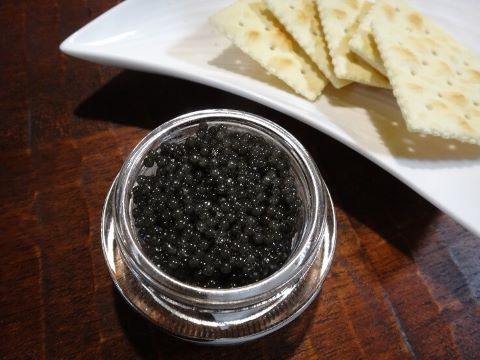 First, place the caviar on a cracker. Fake caviar (made of Lumpfish roe) has added color, and this color will bleed onto the cracker within about 30 minutes. However, the color will not transfer to the cracker from real caviar.
First, place the caviar on a cracker. Fake caviar (made of Lumpfish roe) has added color, and this color will bleed onto the cracker within about 30 minutes. However, the color will not transfer to the cracker from real caviar.